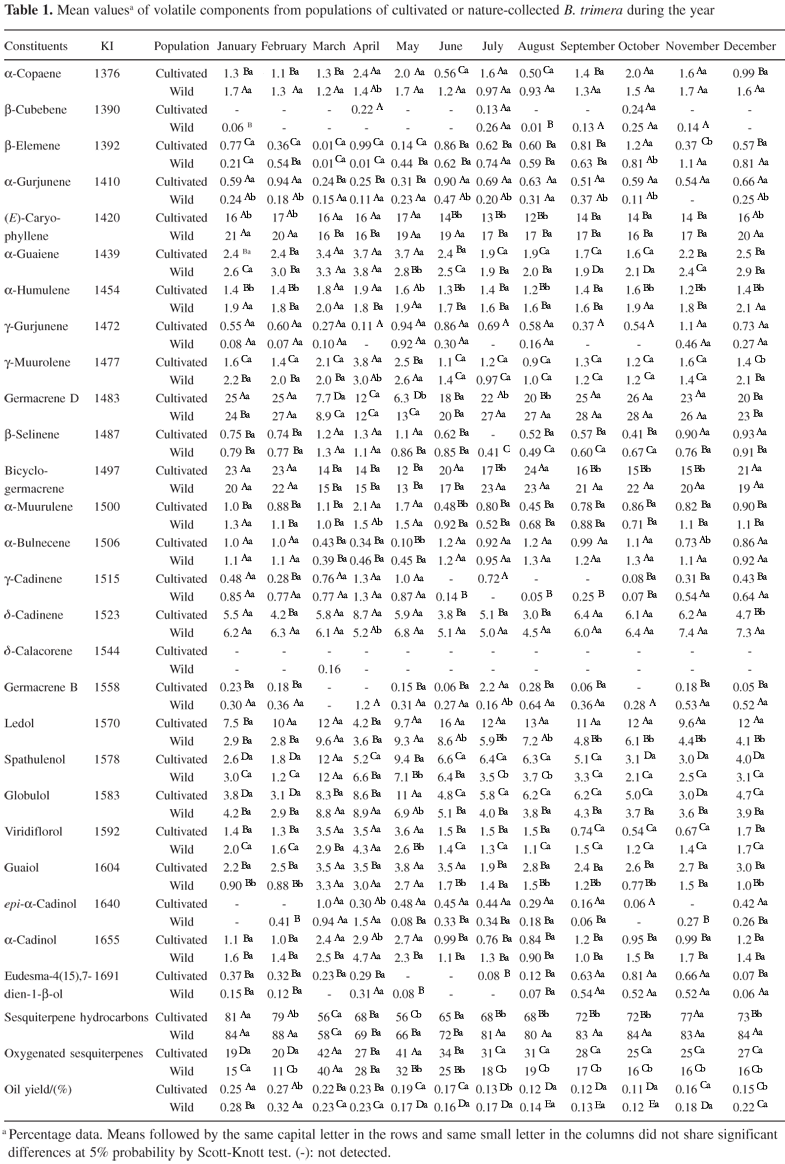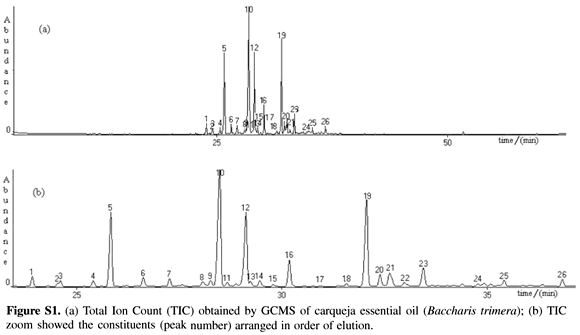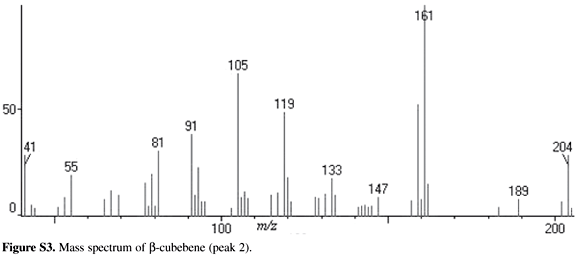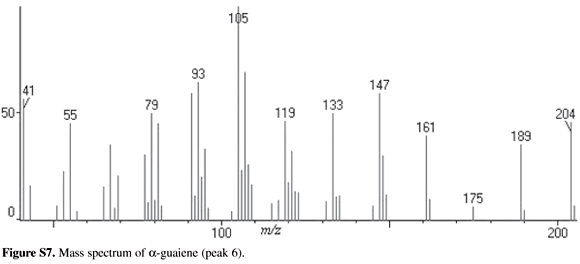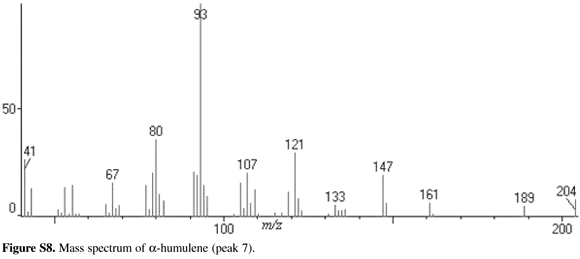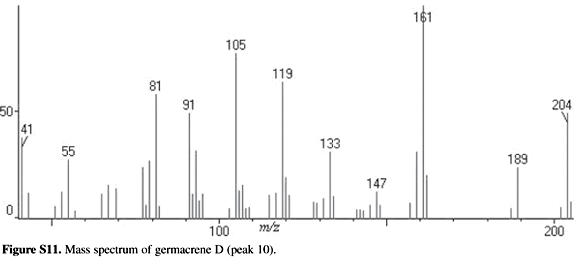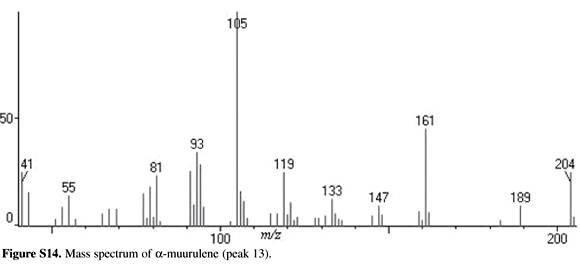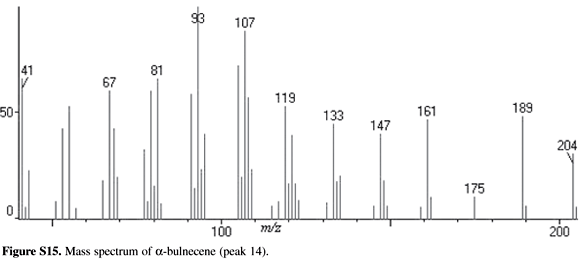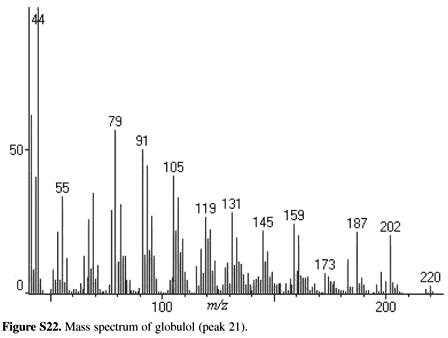The seasonal variations in the chemical composition of the essential oil of wild and cultivated Baccharis trimera populations indicated the presence of three clusters of oils regarding population and phenophase. The first included flowering, wild, and cultivated samples from a period of March-May, with high percentages of globulol and spathulenol. In cluster II, with wild samples collected from June-February, the major constituents were germacrene D and (E)-caryophyllene, while cluster III included cultivated samples from June-February containing a high content of ledol. The canonical correlation analysis revealed that (E)-caryophyllene, Mn, Al saturation, and precipitation were quite strongly related to wild samples (cluster II), whereas ledol and guaiol were related to chemical balance in soils (P, K, S, Cu, Zn, and base saturation) of cultivated samples (cluster III). Both essential oils have predominantly hydrocarbon compositions, although for a couple of months the oxygenated sesquiterpene content is over 40% for both samples. The observed chemovariation might be environmentally determined.
Baccharis trimera; Asteraceae; essential oil; chemical variability; seasonal variation



